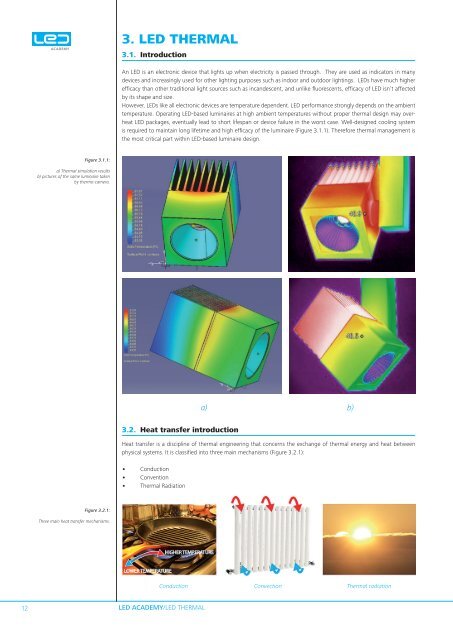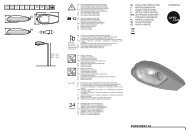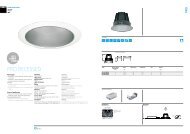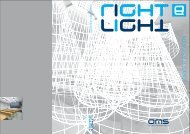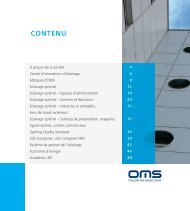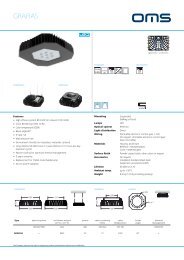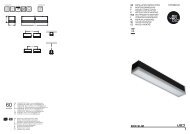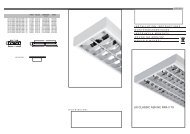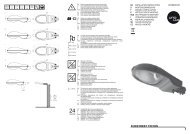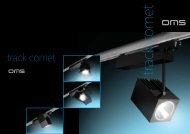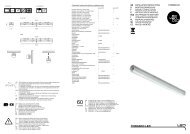Create successful ePaper yourself
Turn your PDF publications into a flip-book with our unique Google optimized e-Paper software.
3. <strong>LED</strong> THERMAL3.1. IntroductionAn <strong>LED</strong> is an electronic device that lights up when electricity is passed through. They are used as indicators in manydevices and increasingly used for other lighting purposes such as indoor and outdoor lightings. <strong>LED</strong>s have much higherefficacy than other traditional light sources such as incandescent, and unlike fluorescents, efficacy of <strong>LED</strong> isn’t affected<strong>by</strong> its shape and size.However, <strong>LED</strong>s like all electronic devices are temperature dependent. <strong>LED</strong> performance strongly depends on the ambienttemperature. Operating <strong>LED</strong>-based luminaires at high ambient temperatures without proper thermal design may overheat<strong>LED</strong> packages, eventually lead to short lifespan or device failure in the worst case. Well-designed cooling systemis required to maintain long lifetime and high efficacy of the luminaire (Figure 3.1.1). Therefore thermal management isthe most critical part within <strong>LED</strong>-based luminaire design.Figure 3.1.1:a) Thermal simulation resultsb) pictures of the same luminaire taken<strong>by</strong> thermo-camera.a) b)3.2. Heat transfer introductionHeat transfer is a discipline of thermal engineering that concerns the exchange of thermal energy and heat betweenphysical systems. It is classified into three main mechanisms (Figure 3.2.1):• Conduction• Convention• Thermal RadiationFigure 3.2.1:Three main heat transfer mechanisms.Conduction Convection Thermal radiation12<strong>LED</strong> <strong>ACADEMY</strong>/<strong>LED</strong> THERMAL


